
Dancing Under The Southern Skies: A History of Ballet in Australia
by Valerie Lawson
Australian Scholarly Publishing
ISBN 978-1925588743, paperback, July 2019, AS $59.95
Publishers page
dancelines.com.au – Valerie Lawson website
The cover of Valerie Lawson’s newly published history of ballet in Australia features a stunning photograph of Leanne Benjamin in full flight above the parched red landscape of the Northern Territory. Her split jete´ seemingly soars above a passing cattle truck – a moment in time and in a dancer’s life captured by the photographer, Jason Bell, in 2006.
The image, commissioned for a Royal Ballet publicity campaign showing dancers in their native regions, serves as a metaphor for Australian ballet’s dilemma. In what way is it unique? Does it reflect Australian culture or vie for recognition as a classically based performance art as good as any in the world? Australian ballet schools are internationally recognised but many excellent dancers leave to join companies elsewhere, as Benjamin did.
Lawson’s book sets out to examine Australia’s early 20th century ‘cultural cringe’ – its uncritical adulation of touring companies from abroad – and the growth of national pride, culturally and politically. Although her context is wide-ranging, she brings individuals into focus with personal details, shining a spotlight onto their roles in Australian dance history. Lavishly illustrated with photographs from Australian archives, her book gives vivid life to long-gone personalities.
She has unearthed letters home from dancers on tour with Anna Pavlova and Colonel de Basil’s Ballets Russes, as well as interviewing veterans of Australia’s early professional companies. She treats fawning publicity about visiting stars with wry humour, deflating some of those stars’ vainglorious egos, from Anton Dolin and Serge Lifar to Robert Helpmann. Ballet may have been late in establishing itself in Australia, but its past is certainly colourful.
Who and what Australian audiences saw was determined for six decades of the 20th century by one dominant organisation, known as JC Williamson’s Ltd (JCW). James Cassius Williamson was an American actor who settled in Australia in 1879. He built a theatrical empire, owning and leasing theatres and touring famous performers and companies, sometimes in partnership with other entrepreneurs. These included the three Tait brothers, who promoted and marketed celebrities from a base in London. They told the press what to say about visiting luminaries and ensured that local dignitaries would be present at every first night. A boomerang would be presented to the stars as they left in hope that they would return.
Visiting ballerinas or troupes were invariably marketed as ‘Russian’, starting with Danish-born, London-based Adeline Genée, who toured Australia in 1913. Then came Anna Pavlova in 1926, touring for five months, with a return visit in 1929. Included in her company was Harcourt Algernon Leighton Essex, known as Algeranoff or just Algy, who sent regular letters home to his mother, as well as writing his memoirs. He described the inner workings of the company, which included Polish and English dancers, all with Russianised names. In his candid letters, he was dismissive of Pavlova’s repertoire, drooled over in press accounts of her performances.
In 1934, after Pavlova’s death, Algy and other former members of her company joined a troupe supporting Olga Spessivtseva on a 15-week tour of Australia. She had a nervous breakdown in Sydney while dancing as Raymonda, and left the tour. Her absence was explained as due to an injured ankle. Lawson devotes a chapter to Spessivtseva’s tragic story, telling how she was eventually rescued from a mental asylum in New York State by Dolin and a loyal friend, Dale Fern.
Later in the 1930s, de Basil’s Ballets Russes toured Australia under various names. Accounts of management chaos, clashes, conspiracies and defrauded dancers read like the shenanigans of the Ballet Stroganoff in Caryl Brahms’ and SJ Simon’s 1930s novels about a fictional Russian ballet troupe. Little did JCW and the Tait brothers know what they had let themselves in for.
The first tour in 1936, by a so-called Covent Garden Russian Ballet, was publicised as a company of Russian dancers who had just performed to great acclaim at London’s Royal Opera House. In fact, they were a motley collection of dancers from de Basil’s main company, René Blum’s rival Ballets de Monte Carlo and Leon Woizikowsky’s bankrupt troupe. They nicknamed themselves the Kangarussky Ballet, dreading the long sea voyage to what they thought was a country of savages.
Led by Hélène Kirsova and Woizikowsky, they performed ballets from the Diaghilev era as well as Leonide Massine’s creations, from La Boutique Fantasque to Les Présages. Theirs was a very different repertoire from the frothy divertissements performed by earlier visitors. Arnold Haskell, the English balletomane and writer, was appointed their publicist, introducing modern ballets to Australian audiences. He was also a fixer, covering up the frictions within the company. He made sure he led a feted social life wherever the company toured.
Two more groups were put together for tours in 1938 -1940, by which time the many nationalities involved were well aware of the turbulence in Europe, knowing they might never go back. There were stars among them – Irina Baronova and Tatiana Riabouchinska, former ‘baby ballerinas’, and Dolin and David Lichine. Archival film footage recorded by an opthalmologist, Dr J Ringland Anderson, displays their showmanship, though their technique was far from refined. (There is a glimpse of their filmed performance of The Golden Cockerel in the current Tate Modern exhibition of Natalia Goncharova’s paintings and designs.)
Edouard Borovansky, a Czech soloist with Pavlova’s company as well as de Basil’s, stayed behind in Australia when the last ‘Ballet Russe’ company left for the United States during the war. Borovansky set up a ballet school in Melbourne; Helene Kirsova had opened her school in Sydney. Both formed their own companies, aiming to prove that Australia no longer needed to import foreign touring troupes.
Funding and audience support were difficult to come by during the war years. Kirsova’s company folded and Borovansky’s was in hock to JCW and the Taits, who demanded box-office-pleasing works to keep their theatres open. Boro, as he became known, wanted to introduce ballets on Australian themes, with little success, and his company was on the point of disbanding when Ballet Rambert arrived in 1947 for what turned out to be a tour of over a year in Australia and New Zealand.
Lawson asserts that Ballet Rambert was part of a campaign by Britain to keep Australia on side after the war, countering the influence of the United States. American films, music and clothing were all too seductive. Britain was determined to strengthen its links with its Commonwealth partner by sending orchestras, theatre and ballet companies as ambassadors of its cultural superiority. At the forefront of the campaign by the British Council were Ballet Rambert and the Old Vic Theatre company, led by Laurence Olivier and his wife, Vivien Leigh. In fact, both companies were in desperate need of money, which they hoped to make on tour. Marie Rambert was deep in debt, having lost Arts Council support in 1947, while de Valois’ Sadler’s Wells Ballet was triumphing at the Royal Opera House.
The British Council managed to ensure that Rambert’s company and the Oliviers’ Old Vic were never in the same city at the same time. Amplified by more and more Australian dancers as the months went by, Ballet Rambert performed works by Antony Tudor, Andrée Howard, Walter Gore, Ashton and de Valois. The extended tour of Australia and New Zealand was an artistic success, although it nearly destroyed the company’s chance of survival on its return to London in 1949.
The Borovansky Ballet just about kept going through the 1950s in fits and starts. It was able to provide a backing troupe for a 1957 tour by Margot Fonteyn, Michael Somes, Rowena Jackson and Bryan Ashbridge in performances of Swan Lake (act II) and Aurora’s Wedding. The tour made money for JCW and Fonteyn, but not Borovansky. Then came an eight-month tour of Australia and New Zealand by the Sadler’s Wells Ballet – the second company, beefed up by principals from the Covent Garden company.
The big attraction, even bigger than Fonteyn, was Robert Helpmann, Australia’s prodigal son. As a young dancer, he had taken class with Pavlova’s company before leaving for London and de Valois’ company. He had made his name as a principal dancer, actor and theatre director, quitting the Sadler’s Wells company in the middle of a North American tour. He was 49 when he returned to perform with it again in Australia, taking on the roles of Dr Coppélius, the Rake in The Rake’s Progress and the Dago in Façade.
Borovansky couldn’t compete. Tired and ill, he knew that plans were already afoot to replace him as director. De Valois, Helpmann, Margaret Scott and Sally Gilmour (Rambert’s ballerina who had stayed behind in Australia) were pushing for Peggy van Praagh to take over. She did so, reluctantly, after his death, and was then enmeshed in schemes to establish a national ballet company. Lawson delves into the complicated negotiations and rivalries (not least between van Praagh and Helpmann) as the new company came into precarious existence in 1962, with the name van Praagh had prescribed for it: The Australian Ballet.
At first, its repertoire was a mixture of Sadler’s Wells ballets, Borovansky ones and commissioned one-acters on Australian themes. Helpmann contributed The Display (1964) incorporating a male lyrebird’s sexual ritual. Its creators were all Australian – Helpmann, the composer Malcolm Williamson and the designer Sydney Nolan, all of whom lived in Britain. Admired (by some) for its flamboyance, the work became the showpiece of the company on tour in Australia and abroad.
The new company’s reputation was further boosted by the arrival of Rudolf Nureyev, partnering Fonteyn in Giselle and Swan Lake. He would become the mainstay of The Australian Ballet in in the 1960s and 1970s, mounting his productions of Raymonda and Don Quixote on the company, as well as performing with it on tour. The company toured extensively, managed by Peter Bahen, a close friend of Helpmann’s and a former employee of JCW. The dancers would later rebel against his involvement in artistic decisions that should have been the responsibility of the director.
By this point in The Australian Ballet’s history, Lawson has to recount the comings and goings of artistic directors, following the removal of van Praagh and then Helpmann from the job. There was a rapid succession that Lawson calls ‘the revolving doors’: Anne Woolliams, van Praagh again, Marilyn Jones, Maina Gielgud, Ross Stretton and David McAllister, the current director and who has announced his retirement in 2020. While the pioneering days of ballet companies are absorbing, more recent accounts of backstage machinations, board interference, dancers’ discontent and public relations cover-ups tend to pall, if only because they are so familiar.
Journalists love probing behind the scenes, and Lawson had been writer and editor for 16 years at the Australian Financial Review and the Sydney Morning Herald. She rounds off her book with a coda of her own articles about the company and some others, published between the 1990s and 2008. They give spotlit glimpses into what was going on after van Praagh’s death in Australia in 1990: they include interviews with outgoing artistic directors, with creators and dancers, and accounts of performances in Australia and elsewhere.
Lawson doesn’t fully address the issue of whether Australian ballet should reflect Australian culture. To take on Aboriginal themes could be seen as cultural appropriation, though The Australian Ballet collaborated with Bangarra Dance Theatre for Stephen Page’s Rites in 1997. Bangarra has its own repertoire of dances based on indigenous myths and experiences.
Graeme Murphy, the artistic director The Australian Ballet never had, preferred to create for his own contemporary group, Sydney Dance Company, for three decades. He choreographed three works for The Australian Ballet, including a very successful Nutcracker (1992), based on the memories of an emigrée Russian ballerina. Other than Stanton Welch, the prolific choreographer in charge of Houston Ballet, most Australian choreographers appear more interested in contemporary dance than ballet. They’ll require another book.










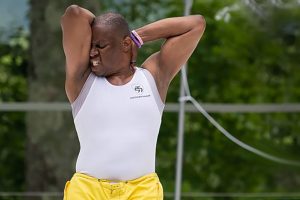
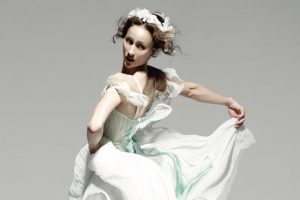
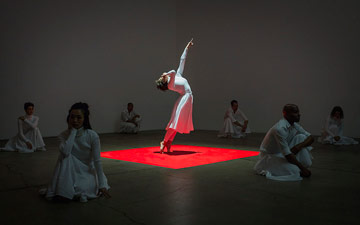
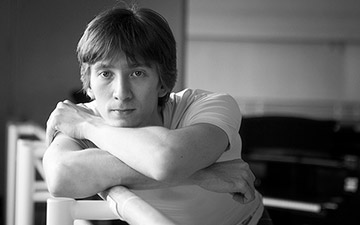
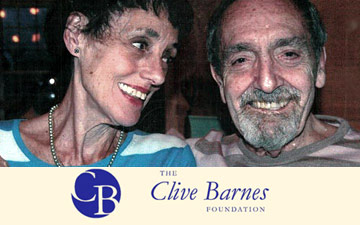
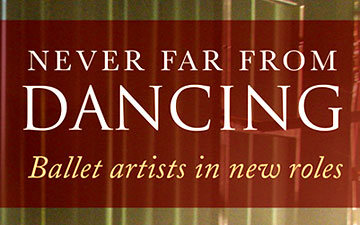
Valerie Lawson informs me that the number of ballets Graeme Murphy has created for The Australian Ballet now amounts to eight, with another, The Happy Prince, due in the 2020 season. Last year, the company celebrated his career with a tribute programme, Murphy.